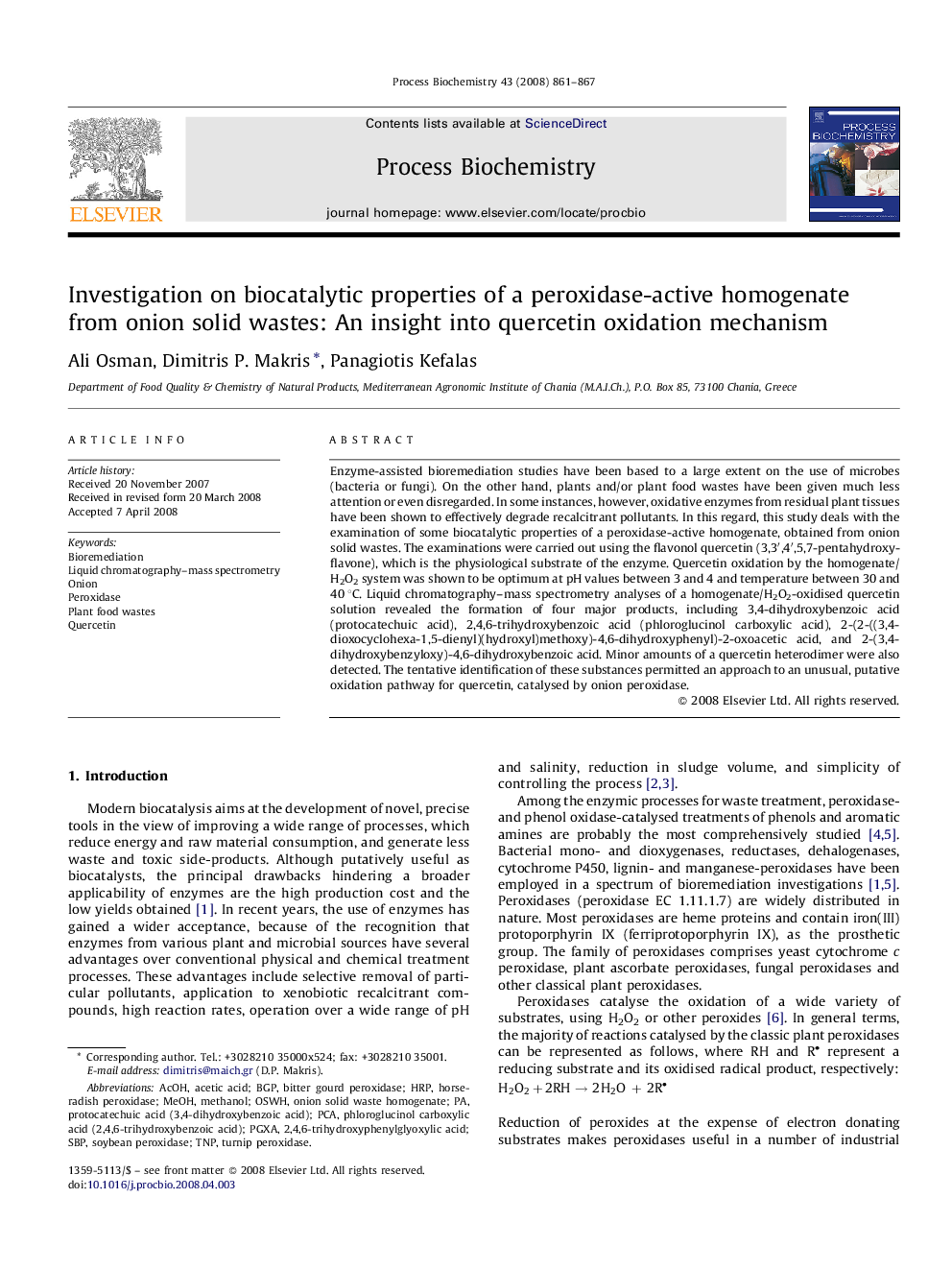| Article ID | Journal | Published Year | Pages | File Type |
|---|---|---|---|---|
| 35534 | Process Biochemistry | 2008 | 7 Pages |
Enzyme-assisted bioremediation studies have been based to a large extent on the use of microbes (bacteria or fungi). On the other hand, plants and/or plant food wastes have been given much less attention or even disregarded. In some instances, however, oxidative enzymes from residual plant tissues have been shown to effectively degrade recalcitrant pollutants. In this regard, this study deals with the examination of some biocatalytic properties of a peroxidase-active homogenate, obtained from onion solid wastes. The examinations were carried out using the flavonol quercetin (3,3′,4′,5,7-pentahydroxyflavone), which is the physiological substrate of the enzyme. Quercetin oxidation by the homogenate/H2O2 system was shown to be optimum at pH values between 3 and 4 and temperature between 30 and 40 °C. Liquid chromatography–mass spectrometry analyses of a homogenate/H2O2-oxidised quercetin solution revealed the formation of four major products, including 3,4-dihydroxybenzoic acid (protocatechuic acid), 2,4,6-trihydroxybenzoic acid (phloroglucinol carboxylic acid), 2-(2-((3,4-dioxocyclohexa-1,5-dienyl)(hydroxyl)methoxy)-4,6-dihydroxyphenyl)-2-oxoacetic acid, and 2-(3,4-dihydroxybenzyloxy)-4,6-dihydroxybenzoic acid. Minor amounts of a quercetin heterodimer were also detected. The tentative identification of these substances permitted an approach to an unusual, putative oxidation pathway for quercetin, catalysed by onion peroxidase.
